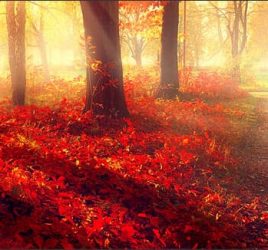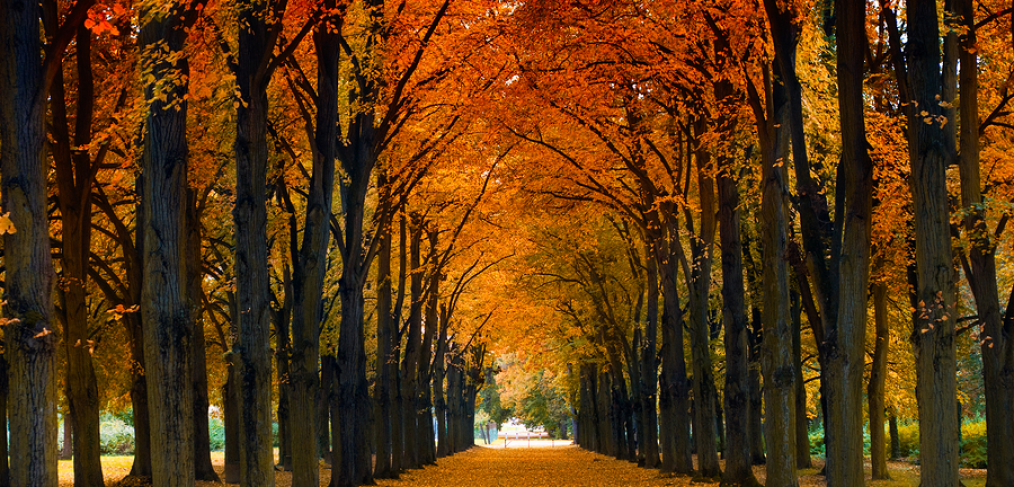
Common Tree Diseases: How to Spot, Diagnose & Treat
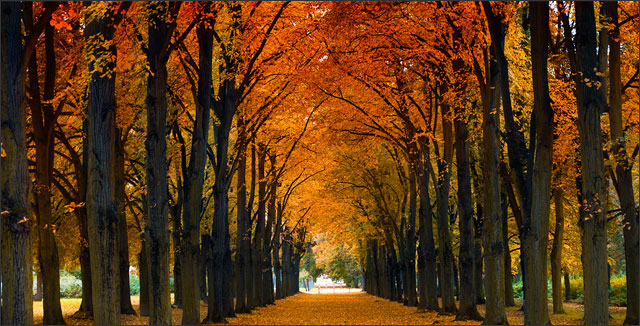
Have you ever noticed black spots on the leaves of your maple tree?
If you have, you may have had a sinking feeling in the pit of your stomach when you see the leaves of the maple covered in black spots. It gives the tree a sickly appearance.
You may have feared the worst and ran to find the answer on the internet.
Rest assured. What you saw on your tree’s leaves isn’t lethal. In addition, if you take the right precautions, you will be able to get the full benefit of its bright yellow leaves in fall in future years.
How do you know if your tree has a disease?
Do you inspect your trees regularly, or would you miss the signs of a disease until it’s too late?
Guide to Common Tree Diseases
This guide is by no means an exhaustive list of tree diseases. However, these are some of the common tree diseases and signs your tree has a condition and how to treat them.
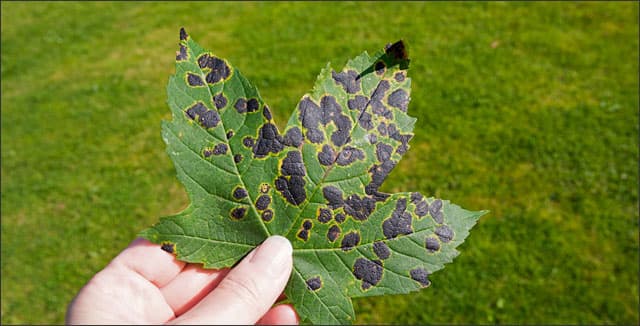
Common tree diseases: Tar spot (Rhytisma acerinum) on a tree leaf
Leaf Spots
It is heartbreaking when your maple, which would typically turn to bright yellow, orange, or red in the fall, has big, black spots all over its leaves. This is called maple tar spot disease, and it’s caused by the same thing, which causes many leaf spot diseases: fungus.
Different types of fungus affect different species of trees, causing yellow-green spots, dark red spots, or rust-type spots on the leaves that eventually turn black or brown toward the end of the growing season.
The same problem can affect crabapples. It’s called “apple scab.”
Fungal infections rarely kill trees. Most of the time, the fungus affects the leaves only, and it can be controlled with the right measures to keep it from coming back next season.
The best things you can do to help control fungal infections are:
Get rid of standing water around your tree if possible by making the grade around the tree more pronounced. Trees that get fungal infections year after year may be struggling with too much moisture.
After the leaves fall from the tree in the fall, rake them up and burn or compost them instead of leaving them on the ground. Spores from the fallen leaves can re-infect your tree in the spring.
Unfortunately, spores travel on the wind so that nearby trees will be at risk. You can warn your neighbors about the dangers of leaving piles of infected leaves and offer to take care of their leaves for them!
For young trees, apply a fungicide spray after the buds show up in the spring. Mature trees won’t be much harmed by the disease and are impractical to spray.
Fungal Infections
Besides leaf spots, fungal infections can weaken and kill a variety of trees.
Anthracnose
Sycamore trees and flowering dogwood are especially susceptible to a group of fungi called anthracnose.
Anthracnose attacks the leaves, twigs, flowers, and fruits of a wide variety of trees and shrubs throughout North America.
Diplodia
Diplodia is a common pine disease that moves upward from the base of a tree. The candles and needles expand, become infected, and die.
Dothistroma
Dothistroma needle blight causes premature defoliation of pines and can kill young trees. Bands of yellow or tan on the needles, followed by needle tip die-back can signal this fungal infection.
Oak Wilt
Oak wilt is a systemic fungal infection that is lethal. White oaks can be treated for this disease, but red oaks will not recover.
The main symptom of oak wilt is vascular discoloration: the veins on the leaves will turn yellow and then brown before the tree loses all of its leaves. You can inject your oaks with preventative fungicide for this disease.
Different trees will have different reactions to fungal diseases. However, there are two main symptoms that can point to fungal diseases. If you spot either of these, it’s time to get your tree some help.
Gall
If you see an odd or ugly growth on part of your tree, this can point to some type of infection, either fungal, bacterial or insects.
Sometimes these growths will be tiny; other times, they can swell to massive proportions. If you notice an outbreak of gall on your tree, call a tree care professional.
It can be challenging to diagnose the underlying problem by yourself, and you’ll need to know your options for controlling the disease.
Witches’ Broom
Witches’ Broom is clusters of dense growth out of lateral buds on branches. They vaguely resemble a broom and don’t follow the typical pattern of growth for the tree.
These growths happen at injury or pruning sites because of infections. An overgrowth of witches’ broom infections can destroy a tree. If you see one, remove it and the injured branch. Spray with fungicide in the Fall or Spring.
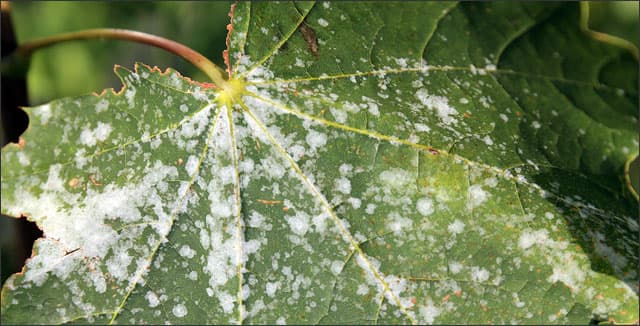
Common tree diseases: powdery mildew
Powdery Mildew
Fungus can grow superficially on the top of any tree or plant surface and destroys new tissue.
To avoid this problem, don’t plant in shady areas or overcrowd your trees — an application of fungicide when you first notice symptoms can help.
Fire Blight
If you have ever noticed a branch or group of branches wilting, turning brown and dropping as though they’ve been scorched by fire, you’ll know what fire blight looks like.
Bacteria that love warm, moist weather can be transferred by bees, infected pruning tools, and rain can spread this disease to your trees.
You can do the most good by disinfecting your pruning tools between each cut in a solution of 1:9 parts bleach and water.
Prune infected branches 12 inches beyond the dead part. Additionally, don’t over-fertilize in the spring. It causes succulent growth that is susceptible to fire blight.
Insect Diseases
Some tree infections are carried by insects – like the lethal yellowing of palm trees that affects trees in Florida and Texas.
Planthopper insects carry a bacteria-like organism and cause flower death, fruit drop, and foliage yellowing of palms. If your palm is infected, it will usually die within five months if left untreated.
While insecticides have not solved the problem, some trees can be treated with an antibiotic injection.
Walnut trees can be infected with a canker disease brought by walnut twig beetles. It forms many small cankers around their galleries, and they spread to girdle branches and stems.
Then the upper limbs wilt and yellow, and eventually, the tree dies within several years.
The sad part is that trees can be infested for years before it is discovered, and there is no chemical management for this disease.
Bringing it Home
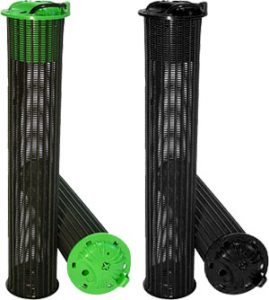
Rootwell Pro-318 Deep Root Watering System
The good news is that many common tree diseases can be prevented with a little extra care from you!
Make sure to rake and burn infected leaves, clean your pruning tools, don’t over-water or over-fertilize, and keep from causing physical harm to your healthy trees.
It will go a long way toward keeping them healthy for years to come.
To further ensure that you trees receive the water, nutrients, and oxygen they need to thrive, install Rootwell’s Pro-318 direct-to-root deep root systems.

